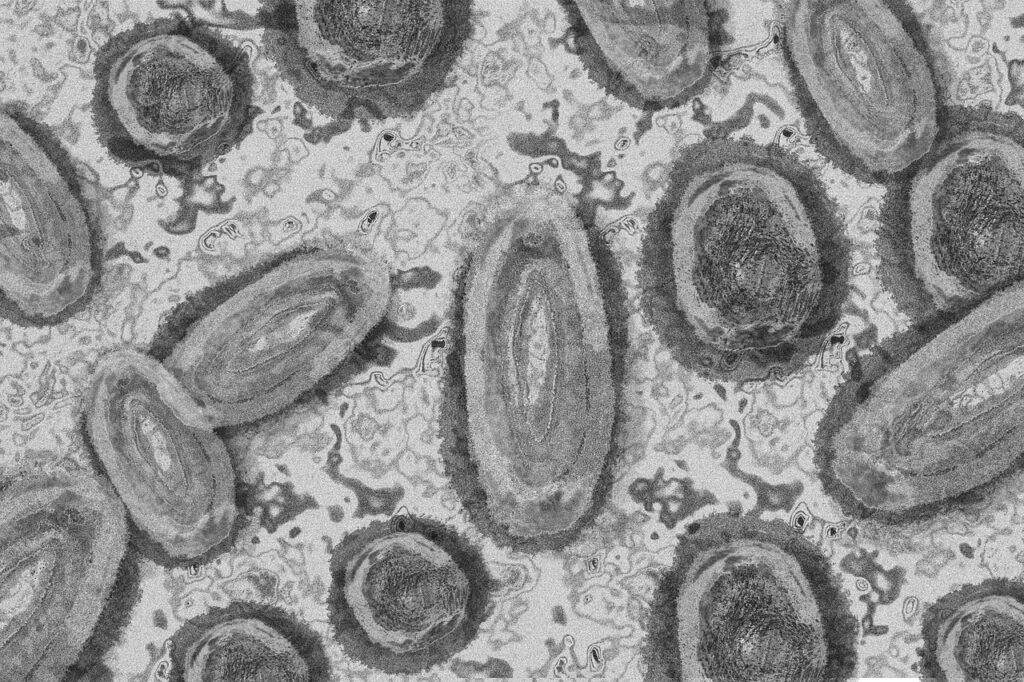What Is Legionnaires’ Disease? A Comprehensive Guide to Causes, Symptoms, and Diagnosis
Contents
- 1 What Is Legionnaires’ Disease? A Comprehensive Guide to Causes, Symptoms, and Diagnosis
- 1.0.0.0.0.1 Read DISCLAIMER
- 1.0.0.0.0.2 The material presented here is for general informational and educational purposes only and is not medical advice. Although we attempt to provide current and accurate information, this blog should not be used as a replacement for professional medical consultation, diagnosis, or treatment. In all cases, consult your physician or an accredited medical practitioner with regards to any medical condition or treatment. Do not ignore professional medical advice or wait for it on the basis of information provided by this blog. In a medical emergency, call emergency services immediately.
- 1.1 Understanding the Invisible Threat
- 1.2 Origins and Biology of Legionella
- 1.3 Who Is at Risk—and Why
- 1.4 Recognizing the Symptoms: Subtle but Serious
- 1.5 How Legionnaires’ Disease Is Diagnosed
- 1.6 Treatment Options and Patient Support
- 1.7 Preventing Exposure: What Communities and Individuals Can Do
- 1.8 Identifying Myths vs. Facts About Legionnaires’ Disease
- 1.9 Recovery and Long-Term Outlook
- 1.10 Why Awareness and Infrastructure Matter Globally
- 1.11 Conclusion: Empowerment Through Understanding
- 1.12 FAQs with Answers
Discover what Legionnaires’ disease is, its symptoms, causes, and how it’s diagnosed. Learn how Legionella bacteria spreads through water systems and what steps you can take to prevent this severe form of pneumonia.
Read DISCLAIMER
The material presented here is for general informational and educational purposes only and is not medical advice. Although we attempt to provide current and accurate information, this blog should not be used as a replacement for professional medical consultation, diagnosis, or treatment. In all cases, consult your physician or an accredited medical practitioner with regards to any medical condition or treatment. Do not ignore professional medical advice or wait for it on the basis of information provided by this blog. In a medical emergency, call emergency services immediately.
Understanding the Invisible Threat
Legionnaires’ disease often lurks quietly in the background, mentioned only when outbreaks make headlines. Yet it’s not a myth—it’s a serious type of pneumonia caused by Legionella bacteria, usually found in water systems. The idea that a microscopic organism living in air conditioning units, hot tubs, or building plumbing can trigger deadly lung infections may seem surreal. And yet, across the world, people have become ill after inhaling mist or steam carrying these bacteria. What makes the disease especially concerning is its subtle onset, potential severity, and the way it preys on compromised immunity or aging physiology. But understanding how it spreads, manifests, and how it is diagnosed offers clarity—and with clarity comes better protection.
Origins and Biology of Legionella
Legionella pneumophila, the most common strain, thrives in warm, stagnant water between 20°C to 50°C (68°F to 122°F). Larger outbreaks have occurred in hotels, hospitals, office buildings, or cruise ships—anywhere water circulates through cooling towers, showers, decorative fountains, or hot tubs. Unlike viruses, Legionella isn’t transmitted from person to person. Instead, it infiltrates people via inhalation of contaminated water droplets, making infrastructure and maintenance a key battleground. In the lungs, these bacteria lodge in alveoli, replicate within immune cells, and trigger intense inflammation. This cascade of events results in lung tissue damage, systemic symptoms, and, in severe cases, organ dysfunction.

Who Is at Risk—and Why
Although anyone can be infected, the risk is higher in certain groups. Older adults, especially over 50, are more prone because of reduced lung resilience or chronic conditions. Smokers and people with chronic lung disease face greater vulnerability. Those with weakened immunity—due to transplant medications, cancer therapies, or chronic illnesses—face heightened risk as well. Yet even younger, healthy individuals have become severely ill when exposed to high bacterial loads or poorly maintained systems. The combination of environmental exposure and individual susceptibility sets the stage for serious infection.
Recognizing the Symptoms: Subtle but Serious
Symptoms commonly begin after a 2–10 day incubation period. Initially, people may experience fever, chills, dry cough, muscle aches, and headache. These early signs could easily be mistaken for flu or common pneumonia. Over time, symptoms escalate to include chest pain, shortness of breath, confusion, nausea, vomiting, diarrhea, and elevated heart rate. Some people develop hyponatremia (low sodium), acute kidney injury, or elevated liver enzymes. The mild flu-like phase often gives way to more severe, systemic illness—sometimes too rapidly to respond without hospitalization.

How Legionnaires’ Disease Is Diagnosed
Doctors often begin with suspicion based on symptoms and exposure history, especially in buildings with water systems or cooling towers. Blood tests may show elevated white cell counts, inflammatory markers, and renal or liver abnormalities. Chest X-rays or CT scans frequently reveal pneumonia-like infiltrates. Confirmation uses more specific tools: urine antigen tests detect Legionella-specific proteins; sputum cultures can isolate the bacteria; PCR assays detect bacterial DNA; and direct fluorescent antibody staining can visualize bacteria in respiratory samples. Because of varying sensitivity, multiple tests may be used to confirm diagnosis.
Treatment Options and Patient Support
Legionnaires’ disease is treated with antibiotics, primarily macrolides (like azithromycin) or fluoroquinolones (like levofloxacin). Intravenous administration is preferred for severe cases, with oral transition as patients improve. Early treatment is vital: starting therapy within 48 hours of symptom onset significantly reduces mortality. Supportive care—oxygen therapy, hydration, lung physiotherapy, and monitoring for complications like sepsis or kidney dysfunction—is equally important. Most hospitalized patients recover over a two-week period, but some need longer, and complications like fibrosis or lingering fatigue may persist.
Preventing Exposure: What Communities and Individuals Can Do
Prevention lies in proper water management. Buildings should maintain water systems at proper temperatures, disinfect cooling towers and plumbing, flush unused lines, and follow regularly updated Legionella control plans. Individuals can reduce exposure by avoiding steam rooms or fountains in poorly maintained facilities, allowing faucets to flush before use, and ensuring safe water handling in communal areas. Community awareness is also essential—public health agencies monitor water systems and report outbreaks to prevent clustering cases.
Identifying Myths vs. Facts About Legionnaires’ Disease
Many myths persist—some say it’s contagious between people, which is false. Others claim drinking contaminated water causes the disease—incorrect, since infection arises via inhalation, not ingestion. Some believe only large facilities get Legionella—but smaller offices or hotels with aging plumbing can, too. Knowledge dispels fear. The truth is that bacteria thrive in certain temperature ranges, and the critical factor is inhalation of microdroplets, not contact.
Recovery and Long-Term Outlook
Most individuals recover with appropriate treatment, though some—especially older patients or those with complications—face longer recovery, fatigue, or lung damage. Post-infection syndromes like reduced oxygen tolerance, muscle weakness, or cognitive slowing may last weeks or months. Follow-up chest imaging and pulmonary function tests help assess recovery. Rehabilitation, targeted respiratory therapy, and close monitoring can support a return to normal activity.
Why Awareness and Infrastructure Matter Globally
Legionnaires’ disease is not confined to certain countries or climates. With global interconnectedness and shared architectural designs, it’s a worldwide concern. As buildings age and water systems evolve, maintaining safe water practices matters more than ever. Healthcare professionals, building operators, and travelers all benefit from understanding Legionella’s transmission dynamics. Informed individuals help spark safer practices—by asking questions, demanding inspections, or recognizing symptoms early in themselves or loved ones.
Conclusion: Empowerment Through Understanding
Legionnaires’ disease combines hidden environmental risk with serious clinical implications. While it can feel invisible, its impact becomes very real in hospitals, rehabilitation centers, and buildings with outdated water systems. Yet knowledge brings control: we can implement preventive water management, seek care early if symptoms arise, and push for safer infrastructure policies. A natural organism doesn’t define fear—it defines responsibility and shared awareness. With science, empathy, and caution, we can coexist with our built environments safely and confidently.
FAQs with Answers
- What is Legionnaires’ disease?
Legionnaires’ disease is a severe lung infection (a type of pneumonia) caused by the Legionella bacteria, usually contracted by inhaling contaminated water droplets. - What causes Legionnaires’ disease?
It is caused by Legionella bacteria, commonly found in water systems like cooling towers, hot tubs, and plumbing systems where water sits and becomes aerosolized. - Is Legionnaires’ disease contagious?
No, Legionnaires’ disease does not spread from person to person; it is typically contracted through inhalation of airborne contaminated water droplets. - What are the early symptoms of Legionnaires’ disease?
Early symptoms include high fever, chills, cough, muscle aches, and headache, often resembling flu before progressing to pneumonia. - How is Legionnaires’ disease diagnosed?
It is diagnosed using a combination of chest X-rays, urine antigen tests for Legionella, and sputum culture tests to identify the bacteria. - Who is most at risk for Legionnaires’ disease?
Elderly individuals, smokers, people with chronic lung diseases, and those with weakened immune systems are at highest risk. - Can you get Legionnaires’ disease from drinking water?
No, drinking contaminated water typically does not cause the disease; it’s the inhalation of aerosolized water that poses a risk. - What is the treatment for Legionnaires’ disease?
Antibiotics, particularly macrolides or fluoroquinolones, are the primary treatment and are often effective if administered early. - What happens if Legionnaires’ disease goes untreated?
Without treatment, it can lead to serious complications such as respiratory failure, septic shock, and death, especially in vulnerable populations. - How long does it take for symptoms to appear?
Symptoms usually appear 2–10 days after exposure to the Legionella bacteria. - Are there long-term effects of Legionnaires’ disease?
Yes, some people may experience lingering fatigue, respiratory issues, or neurological symptoms for weeks or months after recovery. - Can Legionnaires’ disease be prevented?
Yes, through proper maintenance of water systems, including regular disinfection and temperature control to prevent bacterial growth. - How common is Legionnaires’ disease?
While not extremely common, it is on the rise in many countries due to aging infrastructure and increased use of complex water systems. - Is there a vaccine for Legionnaires’ disease?
No, currently there is no vaccine available for the prevention of Legionnaires’ disease. - What industries are at higher risk for outbreaks?
Healthcare facilities, hotels, cruise ships, and large commercial buildings with complex water systems are more prone to outbreaks if not properly maintained.

That analysis is spot on! Seeing how platforms like slotmax game use probability is fascinating. Makes you think about strategy, even in games of chance! Definitely checking out their login options.
Please tell me more about this. May I ask you a question? http://www.kayswell.com
Thank you for providing me with these article examples. May I ask you a question? http://www.kayswell.com
Thank you for sharing this article with me. It helped me a lot and I love it. http://www.kayswell.com
You’ve been great to me. Thank you! http://www.kayswell.com
I am not sure where you are getting your info, but good topic. I needs to spend some time learning more or understanding more. Thanks for excellent info I was looking for this information for my mission. http://www.kayswell.com
Hello, I enjoy reading through your article. I wanted to write a little comment to support you. http://www.kayswell.com
You should be a part of a contest for one of the finest blogs on the net. I’m going to highly recommend this blog! http://www.kayswell.com